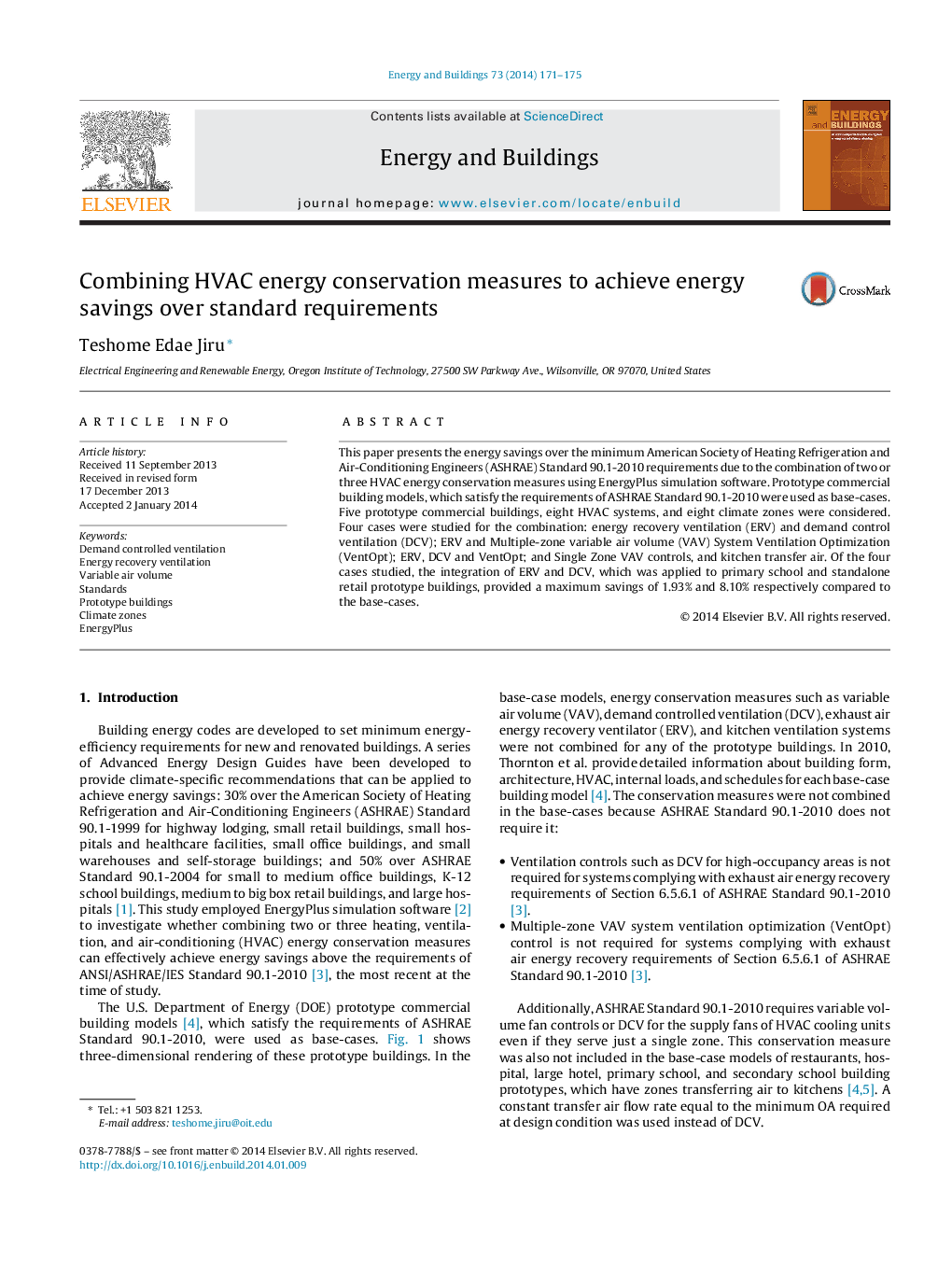| Article ID | Journal | Published Year | Pages | File Type |
|---|---|---|---|---|
| 262968 | Energy and Buildings | 2014 | 5 Pages |
•Energy savings due to the combination of energy conservation measures was studied.•Five prototype buildings in eight climate zones were modeled using EnergyPlus.•Building which satisfy ASHRAE 90.1-2010 requirements were used as base-cases.•Combining HVAC energy conservation measures resulted in energy savings.
This paper presents the energy savings over the minimum American Society of Heating Refrigeration and Air-Conditioning Engineers (ASHRAE) Standard 90.1-2010 requirements due to the combination of two or three HVAC energy conservation measures using EnergyPlus simulation software. Prototype commercial building models, which satisfy the requirements of ASHRAE Standard 90.1-2010 were used as base-cases. Five prototype commercial buildings, eight HVAC systems, and eight climate zones were considered. Four cases were studied for the combination: energy recovery ventilation (ERV) and demand control ventilation (DCV); ERV and Multiple-zone variable air volume (VAV) System Ventilation Optimization (VentOpt); ERV, DCV and VentOpt; and Single Zone VAV controls, and kitchen transfer air. Of the four cases studied, the integration of ERV and DCV, which was applied to primary school and standalone retail prototype buildings, provided a maximum savings of 1.93% and 8.10% respectively compared to the base-cases.
